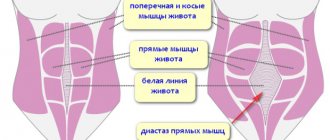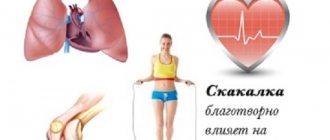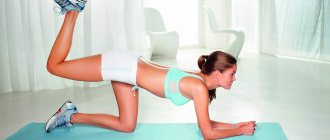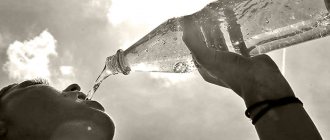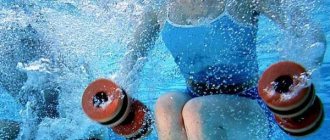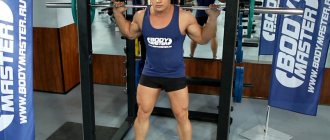Quick links:
Rules for performing exercises
How to determine the optimal load?
Warm-up exercises
Health-improving physical exercises
Exercise is an important part of recovery from severe illness from COVID-19. They have a beneficial effect on the cardiovascular, respiratory, nervous and other systems of the body to improve their function and maintain overall physical performance.
Exercise can help you:
- Improve your physical fitness
- Reduce symptoms of shortness of breath
- Increase muscle strength
- Improve your sense of balance and coordination of movements.
The following simple rules will help you exercise without risk to your health:
- Before exercising, always do a warm-up to warm up before moving on to more vigorous exercise, and then cool down gradually when you're done.
- Wear loose, comfortable clothing and supportive shoes
- Exercise can begin no earlier than an hour after eating
- Drink enough water.
If you experience any of the following symptoms, you should either avoid or stop exercising and then contact your doctor:
- Nausea or feeling sick
- Dizziness, including slight dizziness
- Severe shortness of breath
- Feeling sticky or sweating (sweating)
- Tightness in the chest area
- Increased pain
To find out if you are exercising at the right pace for you, try saying this sentence:
- If you are able to speak an entire sentence without stopping and without experiencing shortness of breath, then you can increase the intensity of your exercise.
- If you are unable to speak at all or can only say one word at a time due to severe shortness of breath, your exercise intensity is too high
- If you can speak a sentence, pausing once or twice to catch your breath, and experience moderate to severe shortness of breath, then you are performing at the right level of exercise.
Warm-up exercises
Warming up prepares your body for physical activity to prevent injury. Your warm-up should last about 5 minutes, and at the end of the warm-up you should feel slightly short of breath. Warm-up exercises can be performed sitting or standing. If you warm up while standing, hold onto a stable surface for support if needed. Repeat each movement 2–4 times
| Slowly raise your shoulders as high as possible and lower them again. |
| Make slow rotational movements with your shoulders, first forward, then back. Hands hang relaxed along the body or lie on the knees |
| Stand up to your full height, spread your feet shoulder-width apart and lower your arms along your body. Make slight bends from side to side, arms relaxingly slide down along the body |
| Alternately slowly raise and lower your knees as shown in the figure. |
| Tap first your toes and then the heel of one foot on the floor in front of you. Repeat the same action with the other leg |
| Sitting on a chair, perform circular movements with your foot, first with your left and then with your right leg. |
Causes of muscle soreness
No, the reason here is no longer lactic acid. She safely left the muscles 30-60 minutes after training. Post-workout pain is caused by microtrauma to muscle fibers caused by overuse. Because someone doesn't know the limits. But most often, sore throat, also known as muscle pain, is observed in beginners. Since their muscles are not yet adapted to the load and receive many microtraumas, which lead to severe soreness.
Minor muscle soreness is not dangerous and usually ends after a recovery period. As your training progresses, pain after exercise may stop appearing altogether.
How can you clearly understand that your muscles are clogged? First of all, this is expressed in some swelling of the muscle, it looks swollen. After all, protein-rich tissue fluid and lymph rush to the site of damage. Movements become more constrained due to the fact that tension in the muscle group is accompanied by pain.
It happens that the soreness is pronounced and does not go away for a long time. What could this mean?
- Training too hard
Perhaps you overdid it in your workout. Scientists have found that pain mainly occurs during eccentric muscle contraction. That is, when the muscle lengthens, but at the same time is under tension (an example from life is going down the stairs). Therefore, negative repetitions contribute the most to muscle damage. For those who don’t know, a negative movement is the phase in which a muscle is stretched, such as lowering a barbell during biceps curls.
- Not recovering
Small muscle groups such as arms or shoulders require 2-3 days to recover. And large ones - legs, back, chest - from 3 to 7 days. If you train them more often, there is a high probability of overtraining. In simple words, the muscles will simply become clogged and will not be able to work at full strength. Working weights will fall or stand still.
- Neglecting stretching
You're neglecting stretching. The fact is that after removing the load from the working muscle, residual deformations may be observed in it. That is, the muscle tissue does not relax completely. If you leave this fact unattended, over time it can lead to muscle spasms, cramps and a constant feeling of congestion.
- Asymmetrical muscle development
Despite the fact that we seem to be symmetrical relative to the sagittal plane (the vertical plane of human symmetry), our muscles on one side and the other may not develop equally. There are many reasons: for left-handers, the left hand will be more developed, for those who are used to leaning on their right leg, it will be stronger than the left.
Sometimes this can cause the muscles to become clogged on one side. This type of congestion occurs during training. For example, when you do dumbbell curls, one hand can still lift the dumbbell, but the other is no longer able to do it. Or another striking example - the barbell press - when a person squeezes one side faster than the other.
- Daily Activities
Muscle congestion is not always associated with training. The back, neck and calves can get tired whether we exercise or not. This is caused by their functions in our daily life. The neck, back and, in particular, the lower back stabilize the position of the head and spine and are especially heavily loaded when we sit for a long time, especially in incorrect positions.
The calves maintain balance when walking and are responsible for pushing off the foot when moving. Their constant tension, especially static, leads to negative consequences. Blood flow in the muscles deteriorates and this leads to a lack of nutrients and spasms.
If you feel any symptoms of sore throat, then carefully look to see if you fall under one of the above points.
Health-improving physical exercises
It is recommended to do health-improving physical exercises for 20–30 minutes, 5 days a week. A few examples of such exercises are described below. In addition, they can include any physical activity, as a result of which the depth and frequency of breathing increases to a moderate or pronounced degree. The duration of health-improving exercises should be increased gradually so as not to overload the body. The increase in the duration of health-improving exercises can be very small - for example, by 30 or 60 seconds. It may take quite a long time to return to the level of activity that was normal for you before your illness.
Walking in place
- While performing this exercise, you can lean on the back of a chair or any stable surface, and also have a chair next to you in case you need to rest
- Raise your knees one at a time
- Gradually increase the height of your leg lifts so that, if possible, your knees rise to the level of your pelvis.
Stepping up a step
- For this exercise, use the bottom step of your flight of stairs.
- If necessary, hold on to the handrail of the stairs for support, and also place a chair nearby so that you can sit down and rest.
- Walk up and down steps, changing legs every 10 steps
These are just a few useful exercises that will help you recover faster from a coronavirus infection. A complete list of exercises and WHO (World Health Organization) recommendations can be found here
How to deal with sore throat?
How to deal with muscle congestion? You are unlikely to find a universal recipe, and once a sore throat occurs, you will not be able to get rid of it. But you can ease your suffering and speed up the process of muscle recovery. Here are some tips for you.
- A thorough warm-up before training is paramount. If you do not prepare the body for the load, the likelihood of developing sore throat increases. For example, before squatting, don’t forget to thoroughly stretch the muscles involved in the exercise—your hips and buttocks.
- Stretching is one of the most effective ways. But you don’t need to stretch your muscles the day after training, when they are already sore. Although this is also welcome. It is much more important to do stretching immediately after training. Or even between sets. It is not necessary to stretch all the muscles, just do a couple of exercises for the working group
- Temperature effect. These can be either baths with water of variable temperature, or a sauna or bathhouse. Increased temperature will help both relax tired muscles and improve blood flow
- Massage. Mechanical impact on tired areas of muscles leads to improved blood and lymph flow, normalizes muscle tone and promotes the elimination of metabolites (metabolic products). During massage, you can use various ointments that help warm up the skin, improve microcirculation, relieve swelling and prevent skin irritation
- Repeated loading. What to do if your muscles hurt from exertion? That's right, load them again. It sounds crazy, but it might work. Of course, we are not talking about the load that led to pain. For repeated exposure, you can use cardio equipment when it comes to your legs. For the upper body, you can use the same exercises, but with 2-3 times less weight. And the goal will no longer be to clog the muscles, but simply to stimulate blood circulation
It is better to use all of the above methods in combination, so you will achieve greater results. But from now on, I advise you, instead of thinking about how to correct the soreness that has arisen, to prevent its occurrence. It is not at all necessary to hammer muscles during training. After all, it has already been scientifically and experimentally proven that pain is not a sign of muscle growth!
Well, hardware fans, I hope the article was useful to you. Leave your comments and questions. I will be only too happy to answer them!
Subscribe to updates and share useful information with friends on social networks. See you soon!
What to do if your muscles are clogged
Massage
The main way to help with clogged muscles is massage. Most often, spastically contracted muscles are relaxed with the help of sports, Thai classical, and relaxing massages. Acupressure and acupuncture may also be recommended.
Massage helps remove lactic acid, normalizes blood circulation, removing stagnant blood, and speeds up metabolism. Along with liquids, protein breakdown products, molecular fragments, and toxic compounds are removed.
Massage perfectly relieves pain and relieves cramps. The athlete’s feeling of “ache” in the body stops, and their well-being returns to normal. He stops feeling “squeezed out” and exhausted.
At the same time, massage helps overcome stagnation in muscle hypertrophy.
Regular visits to the massage room help increase the elasticity of muscle and connective tissue, increase the effectiveness of training, and prevent injuries to muscles and ligaments.
Regular visits to a massage therapist who knows how to carry out high-quality, complete diagnostics will help to identify problems in a timely manner: prerequisites for injuries and muscle pathologies, problems with the musculoskeletal system, developing diseases. Procedures
- Hot shower. Required after every workout. Promotes general relaxation and removal of lactic acid from muscles.
- Bath, sauna. Recommended for all athletes with a normal reaction to heat. A monthly visit to a bathhouse or sauna removes accumulated toxins, relieves fatigue, pain, relaxes, and helps eliminate congestion in the muscles.
- Baths with sea salt. They relax, help you recover faster, and mineralize the body.
- Ozokerite applications. Promotes muscle relaxation and recovery.
- Underwater shower. Relieves tension from the entire body, gives rest to the bone apparatus.
- Swimming in the pool and sea water. Periodic visits to a pool with fresh and sea water are useful for any “land-dwelling” athlete. This gives a completely different type of work to the muscles, greatly reducing the load on the spine, bones and joints. In addition, swimming relaxes, relieves stress, and increases the overall impact of training.
Nutritional supplements
Vitamins A, C, E, as well as natural bioflavonoids, which are abundant in citrus fruits, cranberries, currants, grapes, walnuts, black and red rowan, and tomatoes, help with clogged muscles.
Rehabilitation after plastic surgery: why do we need special recovery programs?
You can find out more about recovery after mammoplasty, liposculpture and other aesthetic interventions on our website, and in more detail - at an appointment with a plastic surgeon
.
Hematomas and swelling after surgery, unfortunately, are inevitable. The minimum period required for tissue restoration after blepharoplasty and facelift is 14-30 days.
Rehabilitation after body surgery usually lasts 2 times longer. Of course, much depends on the specifics of the surgical intervention and the individual characteristics of the body.
Each patient always has a choice: to undergo an additional rehabilitation course or not. However, it is important to understand that rehabilitation programs are not only aimed at reducing rehabilitation or reducing pain. Electrostatic and lymphatic drainage massage, ultraphonophoresis and injection procedures have a beneficial effect on the skin at the cellular level. The restoration course is an excellent solution for those who strive for the best aesthetic result, want to take care of their skin and begin rehabilitation after plastic surgery with self-care, which is necessary to consolidate the impressive effect!
Why does a muscle clog?
Overtraining is a condition well known to strength athletes. It arises from heavy loads against the background of an insufficient interval between workouts. Strength training is a kind of stress for muscles. During strength exercises, muscle tissue is damaged - covered with microcracks. They start the self-healing process. This means that satellite cells, whose function is to carry out routine repairs in muscle fibers, fill microcracks. From some, microfibrils grow - components of muscle fibers. As a result, the muscle grows in diameter (hypertrophies).
The process requires a sufficient amount of oxygen, as well as the hormones insulin, somatotropin and testosterone.
Insulin accelerates protein synthesis and helps cells become saturated with glucose, which is then transformed into glycogen, the source of cell nutrition.
Somatotropin inhibits protein breakdown, enhances its formation, promotes fat burning; increases the percentage of muscle mass, reduces the percentage of fatty tissue.
Testosterone also helps muscles grow and is involved in fat burning.
However, if the workout is too long, the rate of oxygen saturation of the muscle fibers drops. Oxygen deficiency causes the formation of lactic acid, stagnation of blood in the overtrained muscle, which no longer grows in volume, but hurts, hardens, and swells from stagnant blood and lactic acid.
If an athlete ignores these signals, continues training, does nothing, hoping that “it will go away on its own,” he risks:
- tear a muscle;
- provoke the development of contracture;
- develop pathological processes in muscle tissue;
- get a decrease in immunity, libido and general deterioration in well-being;
- become absent-minded, apathetic, irritable;
- get insomnia.
